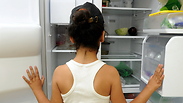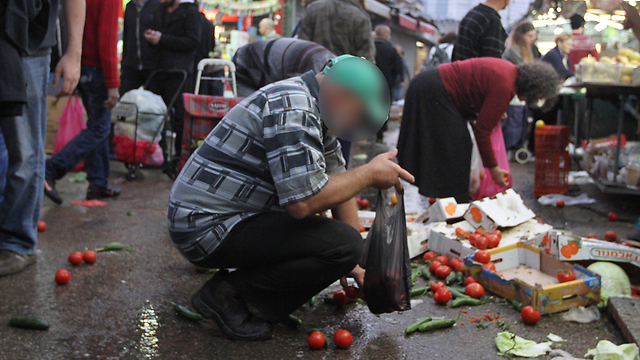
776,500 Israeli children live in poverty
The annual poverty report, released by the National Insurance Institute showed a marked increase in nearly all measurements of poverty in Israel.
A marked increase was measured in the amount of families, individuals, and children living in poverty in the 2014 poverty index. This after a measured decline in poverty levels in 2013. A steady rise was also measured in the equality index, poverty in the Arab sector, and "poor workers," all the while those considered "poor" by the state have become poorer. These are the difficult conclusions that arise from poverty report released on Wednesday by the National Insurance Institute.
The report indicated that 1,709,300 of Israel's citizens live below the poverty line. Israel's poverty levels were among the highest in the developed world. Among others, the statistics refer to 444,900 families and 776,500 children. Israel is currently ranked second from the bottom in terms of poverty and childhood poverty within the OECD.
According to the report, the number of families living in poverty rose from 18.6% in 2013 to 18.8% in 2014. Poverty among residents also rose from 21.8% to 22.0% - and the percentage of children living in poverty rose from 30.8% to 31%.
Who is poor?
According to the report, the quality of life, in terms of the standard median income per person, rose by 2.4% in 2014, as did the poverty line – which is adjusted annually according to the median income (or the middle point in the income range.) According to the report, an individual with an income of less than NIS 3,077 a month is consider poor, as is any couple making less than NIS 4,923 a month. A family of five, whose monthly income is less than NIS 9,230, is also considered poor.
A comparison to poverty levels in other OECD countries shows that Israel ranks second from the bottom, topping only Mexico. A similar picture appears in comparing child poverty, in which Israel is second only to Turkey in terms of poor children.
According to researches, Israel is better off without government intervention in the form of taxation and stipends. The researchers stated that, "The percentage of poor are actually lower thanks to a less generous welfare system.. as the meager assistance is pushing poor families to work for low wages, thanks to inequality, poor adherence to the minimum wage, and low levels of incorporation, among other things.
Poor workers
In 2014 the percentage of poor families rose from 12.5% to 13.1% (after a subtle decline in 2013.) The writers of the report attribute the figures to a decrease in employment levels, and a rise in the number of single income families – from 29.5% in 2013 to 30.2% in 2014.
The poor became poorer in 2014
In contrast to the poverty levels which experienced a slight increase, the depth of poverty (a measurement measuring the distance between income and the poverty line) rose from 32.8% to 34.6%. The severe poverty measurement (of the poorest citizens) rose by 10%.
Two groups within the population – Arabs and Ultra Orthodox- still maintain unimaginable levels of poverty, at nearly 50%. According to the report, poverty among Arab families rose from 51.7% in 2013 to 52.6% in 2014.
Poverty levels within the Ultra Orthodox community rose to 54.3% in 2014. Two thirds of all children in this sector of the population live in poverty.
Poverty among the elderly also rose from 22.1% to 23.1% in 2014, an increase attributed to a decline in income for the sector.













